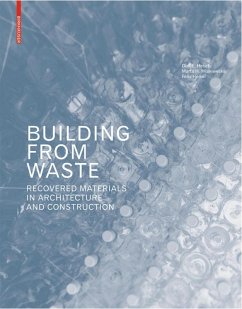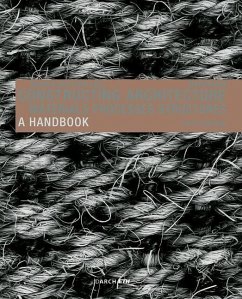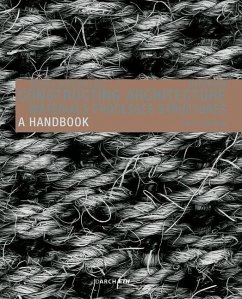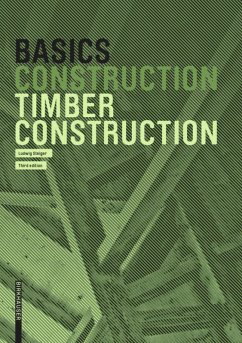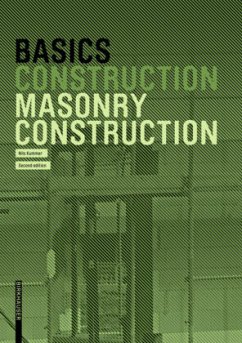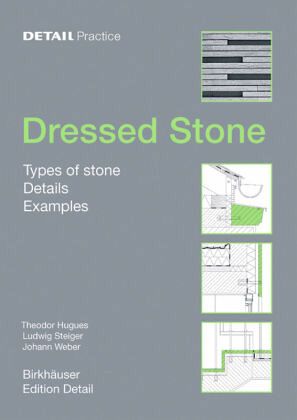
Detail Practice: Dressed Stone
Versandkostenfrei!
Versandfertig in 2-4 Wochen
50,16 €
inkl. MwSt.

PAYBACK Punkte
0 °P sammeln!
Handling this traditional but still captivating building material has its quirks, today perhaps more than ever. On the one hand it can no longer be taken for granted that stonemasonry skills will be readily available, while there are also new requirements and applications, not to mention damaging environmental influences, that create uncertainty for planners and implementers. This book is designed to provide assistance.
- From cornice to curtain-walling: all details in words and sectional drawings
- Are you looking for a particular stone? The most important domestic types of stone with supplier details
- Various surface treatments and their visual effect
- Documentation of 15 selected example applications
- From cornice to curtain-walling: all details in words and sectional drawings
- Are you looking for a particular stone? The most important domestic types of stone with supplier details
- Various surface treatments and their visual effect
- Documentation of 15 selected example applications
Der Einsatz von Naturwerkstein hat eine lange Tradition. Der Umgang mit diesem faszinierenden Material stellt jedoch hohe Anforderungen an das handwerkliche Können und stellt Planer und Ausführende vor neue Herausforderungen in neuen Anwendungsbereichen.
Dieses Buch möchte hier Abhilfe schaffen: Der Einsatz von Naturstein wird in Detailzeichnungen im Maßstab 1:10 nachvollzogen, wobei besonderer Wert auf alle Anschlusspunkte und die damit verbundenen speziellen Probleme gelegt wird und worauf bei Entwurf und Planung als auch während der Ausführung zu achten ist.
Gegenüber der erhältlichen deutschen Ausgabe wurde diese internationale Ausgabe im konstruktiven Teil ergänzt durch ein Kapitel zur Fassadentechnik, und die Steinkarten wurden um eine Auswahl der meistgefragten 80 europäischen Steine erweitert.
Dieses Buch möchte hier Abhilfe schaffen: Der Einsatz von Naturstein wird in Detailzeichnungen im Maßstab 1:10 nachvollzogen, wobei besonderer Wert auf alle Anschlusspunkte und die damit verbundenen speziellen Probleme gelegt wird und worauf bei Entwurf und Planung als auch während der Ausführung zu achten ist.
Gegenüber der erhältlichen deutschen Ausgabe wurde diese internationale Ausgabe im konstruktiven Teil ergänzt durch ein Kapitel zur Fassadentechnik, und die Steinkarten wurden um eine Auswahl der meistgefragten 80 europäischen Steine erweitert.
Dieser Artikel kann nur an eine deutsche Lieferadresse ausgeliefert werden.




